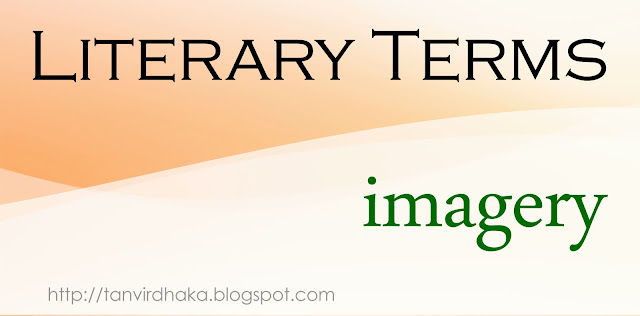The intensity of any literary work largely depends on powerful imagination. It also depends on the effective execution of that very imagination in the pages of a literary work. Therefore, to visualise his/her imagination the poet/writer often employs various literary devices. The most effective and compelling of those is the use of imagery (a figure of speech). Imagery is used in literary works to refer to the ways the writers compose mental images in words. It signifies all the sensory perceptions used in a literary work, whether by literal description, allusion, simile, or metaphor. Imagery is not limited to visual imagery; it also includes auditory (sound), tactile (touch), thermal (heat and cold), olfactory (smell), gustatory (taste), and kinesthetic sensation (movement). Imagery engages the reader’s imagination through wonderful descriptions or illustrations that vividly portray the reality of a particular moment. A literary work with effective imagery gives the reader a clear mental picture of what is happening and enhance what the writer is trying to convey to the reader. The main functions of imagery can be summarised in the following manner:
- Imagery is used to concretise an abstract or inner state of mind.
- Generally a poet’s/ writer’s imagery takes the form of similes and metaphors which are used either for effective communication of thought or decorative purposes.
- Sometimes the poet/writer bases his imagery on literary descriptions.
- It is not merely used to signify descriptions of visible objects and scenes.
- Imagery is used to signify all the objects and qualities of sense perception.
- It enables the poet/writer to draw/ create pictures in words.







0 comments:
Post a Comment